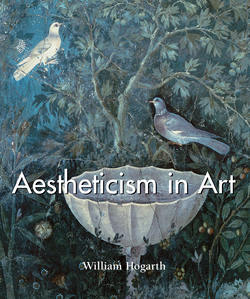Aestheticism in Art

Реклама. ООО «ЛитРес», ИНН: 7719571260.
Оглавление
William Hogarth. Aestheticism in Art
Introduction
General Rules of Composition
Of Fitness
Of Variety
Of Uniformity, Regularity or Symmetry
Of Simplicity, or Distinctness
Of Intricacy
Of Quantity
Mastering of Lines
Of Lines
Of What Sort of Parts, and How Pleasing Forms Are Composed
Of Composition with the Waving-Line
Of Compositions with the Serpentine-Line
Light, Shadows and Colours
Of Proportions
Of Light and Shade, and the Manner in which Objects are Explained to the Eye by Them
Of Composition, with Regard to Light, Shade and Colour
Of Colouring
Positioning of the Human Figure in Compositions
Of the Face
Of Attitude
Of Action
Hogarth’s Life
Отрывок из книги
Raffaello Sanzio da Urbino, known as Raphael, The Madonna and Child with the Infant Saint John the Baptist, known as La Belle Jardinière, 1507–1508. Oil on wood, 122 × 80 cm. Musée du Louvre, Paris.
If a preface was ever necessary, it may very likely be thought so for the following work; the title of which (in the proposals published some time since) have greatly amused and raised expectations of the curious, though not without a mixture of doubt, that its purpose could ever be satisfactorily fulfilled. For, despite the fact that beauty is seen and confessed by all, from the many fruitless attempts to account for the cause of its being so, enquiries on this subject have almost been sacrificed; and the subject generally thought to be a matter of too high and too delicate a nature to admit of any true or intelligible discussion. Something, therefore, introductory ought to be offered upon the presenting of a work with a face so entirely new, especially as it will naturally encounter, and perhaps even overthrow, several long-received, thorough and established opinions. Since controversies may arise, how far, and after what manner, does this subject have to go to be considered and treated fairly? It will also be proper to lie before the reader what may be understood from the works of both ancient and modern writers and painters.
.....
Let us add to this that there is scarce an Egyptian, Greek, or Roman deity that does not have a twisted serpent, cornucopia, or some other symbol winding in this manner to accompany it. The two small heads over the bust of the Hercules, of the goddess Isis, one crowned with a globe between two horns, the other with a lily, are of this kind. Harpocrates, the god of silence, is still more remarkably so, having a large twisted horn growing out of the side of his head, a cornucopia in his hand, and another at his feet, with his finger placed on his lips indicating secrecy. It is equally remarkable that the deities of barbarous and gothic nations never had, even to this day, any of these elegant forms of their own.
Antonio Allegri, known as Correggio, Assumption of the Virgin, 1526–1530. Fresco, 1093 cm × 1195 cm. Parma Cathedral, Parma.
.....